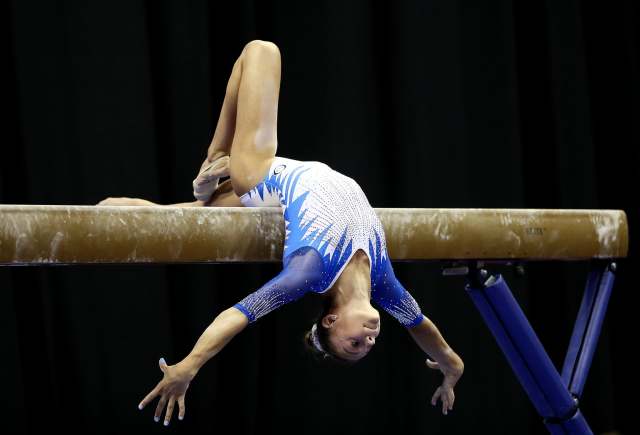The balance beam is a rectangular artistic gymnastics apparatus. The beam is a small, thin beam which is typically raised from the floor on a leg or stand at both ends. Beams are usually covered with leatherlike material, and are only 4 inches wide and routines are only performed by female gymnasts.
Originally, the beam surface was plain polished wood. In earlier years, some gymnasts competed on a beam made of basketball-like material. However, this type of beam was eventually banned due to its extreme slipperiness. Since the 1980s, beams have been covered in leather or suede. In addition, they are now also sprung to accommodate the stress of high-difficulty tumbling and turns and poses.
In the early days of women's artistic gymnastics, beam was based more in dance rather than on tumbling. Routines, even at the elite level were composed with combinations of leaps, dance poses, handstands, rolls and walkovers.
Balance beam routines became more difficult in the 1970s. The transition was accompanied by the change from wooden beams to safer, less slippery models with suede-covered surfaces. By the mid-1980s, top gymnasts routinely performed flight series and multiple aerial elements on the balance beam.

